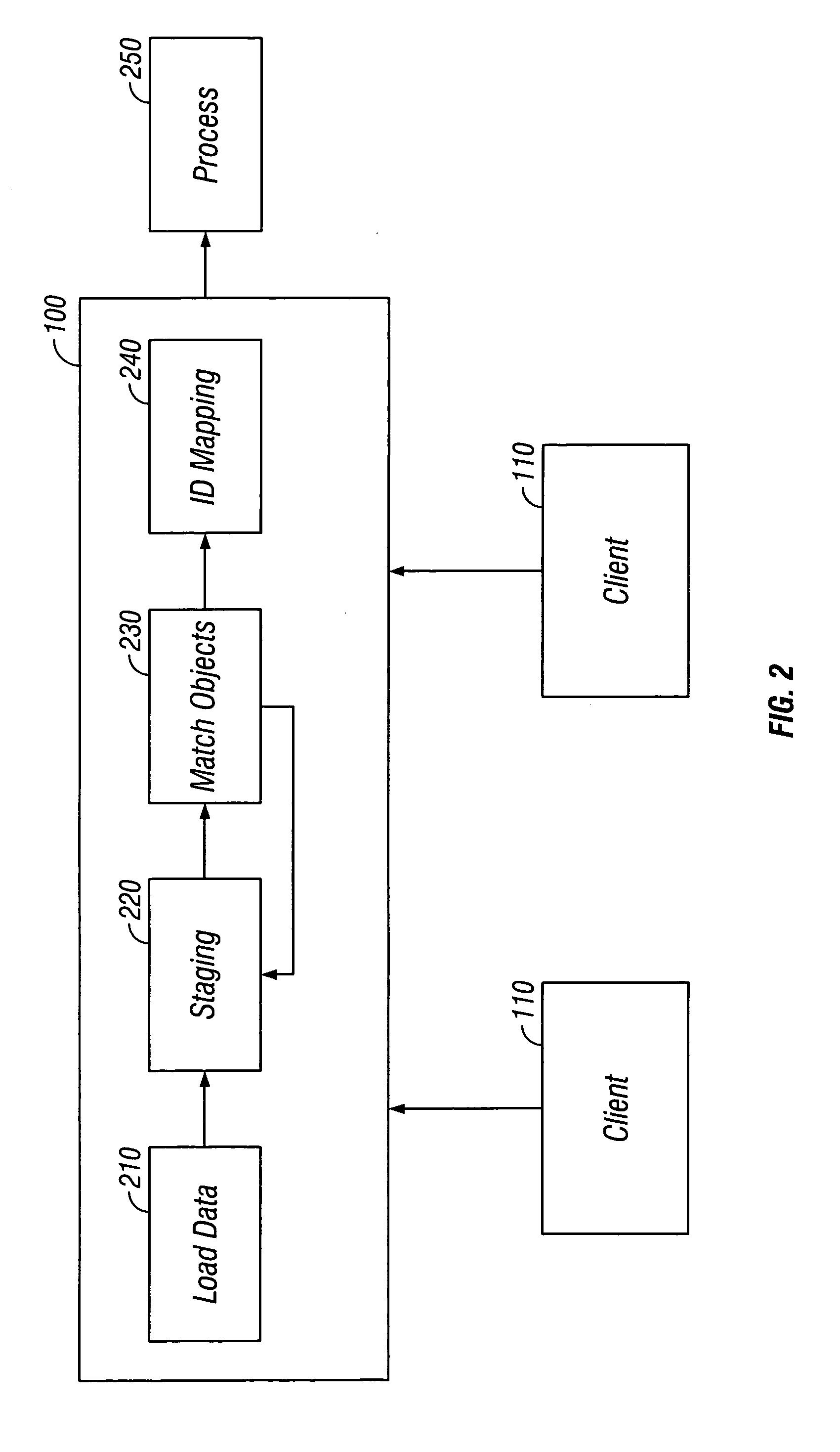Distributing data in master data management systems
a data management system and data technology, applied in the field of data processing and data distribution in data management systems, can solve problems such as data redundancy, irrelevant or incorrect information, and the inability to integrate business processes in these scenarios
- Summary
- Abstract
- Description
- Claims
- Application Information
AI Technical Summary
Benefits of technology
Problems solved by technology
Method used
Image
Examples
Embodiment Construction
[0032]As shown in FIG. 1A, a collaborative master data management (“cMDM”) system includes a central module 100 and one or more client modules 110. Each client module 110 is linked directly to the central module 100.
[0033]The central module 100 can include a central system representing a centralized control of data management for an entity, such as a business or an organization. The client modules 110 can include systems or groups performing processes on master data. For example, the client modules 110 can include systems and / or groups involved in a product creation process. In this example, the client modules 110 can include a legacy module, an e-procurement module, an e-sales module, a sourcing module, a collaborative engineering module, a manufacturing module and enterprise resource planning (“ERP”) modules.
[0034]The master data can be stored in the client module 110, in the central module 100 or in both, depending on the implementation. The central module 100 allows the master d...
PUM
 Login to View More
Login to View More Abstract
Description
Claims
Application Information
 Login to View More
Login to View More - R&D
- Intellectual Property
- Life Sciences
- Materials
- Tech Scout
- Unparalleled Data Quality
- Higher Quality Content
- 60% Fewer Hallucinations
Browse by: Latest US Patents, China's latest patents, Technical Efficacy Thesaurus, Application Domain, Technology Topic, Popular Technical Reports.
© 2025 PatSnap. All rights reserved.Legal|Privacy policy|Modern Slavery Act Transparency Statement|Sitemap|About US| Contact US: help@patsnap.com



